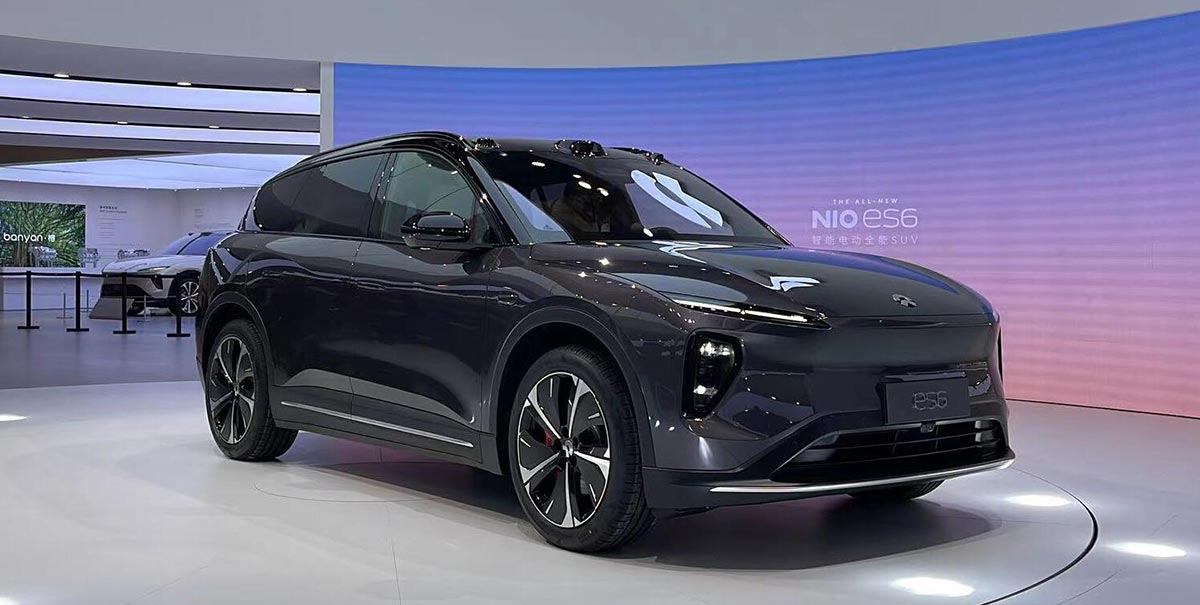La production quotidienne de Nio de 300+ Véhicules ES6, Certains ateliers employant des doubles équipes
Nio’s F1 plant stopped production for five days between July 29 et août 2 pour effectuer une mise à niveau de la ligne de production, Selon les médias locaux.

(Image: NIO es6s)
Many have wondered about Nio’s (NYSE: NIO) Production en usine, mais le véhicule électrique (EV) maker has revealed little about that. Maintenant, a new report sheds some light.
Nio is currently seeing at least 300 ES6s roll off the production line every day, and some of its workshops have switched from single-shift to double-shift production, local media outlet Caixin said in a report (behind paywall) Aujourd’hui, citing a person familiar with the company’s production lines.
De plus,, Nio’s F1 plant stopped production for five days between July 29 et août 2 pour effectuer une mise à niveau de la ligne de production, D’après le rapport.
That seems to explain why insurance registrations for Nio vehicles in China have slipped in the past two weeks, even as it completed new model launches and the transition to the NT 2.0 platform for all models except the EC6.
In the first week of August, à partir de juillet 31 au mois d’août 6, insurance registrations of Nio vehicles in China stood at 4,300 Unités, en bas 20.37 pourcentage de 5,400 units in the previous week, according to data previously shared by Li Auto (NASDAQ: LI).
In the second week of August, from August 7 au mois d’août 13, insurance registrations of Nio vehicles in China slipped further to 3,300 Unités, en bas 23.26 percent from the previous week.
Nio’s vehicles are produced at two factories in Hefei, Province de l’Anhui, in eastern China, including the F1 factory, the JAC Nio advanced manufacturing base, and the F2 factory in NeoPark.
Originally, both the old ES6 and ES8 were produced at the F1 plant, but to ensure production capacity, the F1 plant is now mainly producing the new ES6, while production of the new ES8 has been shifted to the F2 plant, according to Caixin.
Nio launched the new ES6, based on the latest NT 2.0 plateforme, in China on May 24, with its deliveries starting on the night of the launch.
The company launched the ET5 Touring on June 15, et les livraisons ont commencé en juin 16.
Deliveries of the new ES8 in China began on June 28, and the Nio flagship SUV was launched on December 24, 2022 on Nio Day 2022.
With capacity climbing following the intensive launch of new models, Nio a livré un record 20,462 véhicules en juillet, the first time since its inception that it has seen deliveries exceed the 20,000 mark.
The Nio ES6 delivered 11,118 unités en juillet, contribuant 54.33 percent of Nio’s monthly deliveries, données surveillées par CnEVPost.
L’ET5 Touring a tenu ses promesses 3,662 unités en juillet, contribuant 17.89 percent of Nio’s deliveries in the month.
Nio ES8 delivered 1,917 unités en juillet, un 226.02 percent increase from June and a new high since December 2021.
Apart from the factory production, Caixin’s latest report also mentions the cost of Nio’s battery swap stations.
Nio’s investment cost for a single battery swap station averages between RMB 4 million ($550,000) et RMB 5 million, and it will invest more than RMB 4 billion in these facilities in 2023, Le rapport indique que, citing a source from China Automotive Technology and Research Center (CATARC).
Investment costs for battery swap stations include site costs, equipment acquisition costs, construction costs, battery costs, and operating costs including equipment maintenance and power purchases, the report noted.
Nio aims to add 1,000 stations d’échange de batterie dans 2023, taking the facility’s total to 2,300 at the end of the year.
As of August 21, Nio had 1,673 battery swap stations in China, données surveillées par CnEVPost.
Since Nio’s first battery swap station went live, the company has provided more than 27 million battery swap services.
Notamment, Nio has never disclosed the cost of each battery swap station, although previous reports had suggested that each first-generation battery swap station cost RMB 3 million to build, with the cost of the second-generation of the facility dropping to RMB 1.5 million.
Nio’s cost to bring a second-generation battery swap station into operation is about RMB 2.5 million, and the capital expenditures associated with these facilities will not bring financial pressure, Yu Xiaoli, an analyst at Chinese brokerage Industrial Securities, said in an October 2021 research note.

 Auto en Chine
Auto en Chine